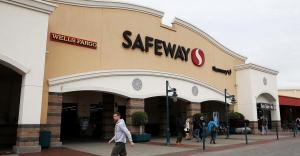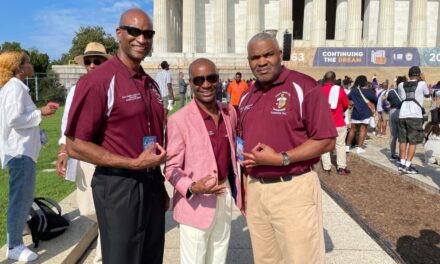
Safeway is one of the few full-service grocery stores found in the District of Columbia’s predominately Black Wards 7 and 8. Of the 49 full-service grocery stores offered in D.C., only four are located in two wards combined. (Photo/Howard University News Service)
By Corinne Dorsey, Howard University News Service
WASHINGTON — New restaurants, grocery stores and specialty food markets have been popping up all over the District of Columbia as gentrification has taken hold in neighborhood after neighborhood.
But not in Wards 7 and 8. In these two heavily Black neighborhoods, getting fresh food at is a challenge. Of the 49 full-service grocery stores offered in D.C., only four are located in Wards 7 and 8 combined.
Food insecurity is no new issue in D.C., or America, but it remains a real problem for two of the city’s poorest wards as the rest of the city flourishes.
Food deserts are geographic areas with little access to nutritious and affordable foods, according to the U.S. Department of Agriculture. Based on the 2000 and 2006 Census data on the locations of supermarkets, supercenters, and large grocery stores, the department identified 6,500 food deserts across the nation.
The residents located in those areas have limited access to nutritious food, which leads to higher reliance on junk food and fast food, experts say.
Additionally, food deserts are usually in low-income areas and communities of color, according to a Department of Agriculture study. Those neighborhoods also often report higher rates of obesity and diabetes, according to a study done by the D.C. Policy Center.
Kwame Brown, a former at-large member of the D.C. City Council before he was booted off after being convicted of federal bank fraud and campaign violations, said he has watched as other communities have benefited from the District’s recent economic growth, but Wards 7 and 8 have not.
“In the last five to eight years, they have built six or seven grocery stores in one ward and the two wards next to it,” Brown said. “Seven and 8 haven’t gotten any.
“You gotta wait for someone else to move into your neighborhood that doesn’t look like you for people to actually wake up and respect the neighborhood.”
According to DC Health Matters, Wards 7 and 8 have the highest rates of Black residents in the city. Both are 92% Black, according to the government website.
While other neighborhoods have seen the number of grocery stores in their neighborhood increase in recent years, Wards 7 and 8 have seen a decrease in food markets. According to D. C. Hunger Solutions, the two wards had seven full-service grocery stores in 2010 and now they have only four in an area with over 160,000 residents.
Although there have been loans, federal tax credits, grants, and a program put in place by the city council to encourage grocery stores to build in these areas, there have been no new grocery stores Wards 7 and 8 in over 15 years, according to D.C. Hunger Solution’s Grocery Store Report.
Philip Pannell is a community organizer for the Anacostia Coordinating Council who resides in Ward 8. He said the disparity is glaring.
“East of the river are three major supermarkets, basically serving an area of 150,000 people, the Giant and the two Safeways,” Pannell said. “They’re also very few sit-down restaurants east of the river.”
To support the residents of the two wards, D.C. Central Kitchen, supplies fresh fruits and vegetables to convenience stores.
“The indications are a number of projects have been on the drawing board,” Pannell said. “When they truly come to fruition, then things will change for the better here east of the river.”
Help us Continue to tell OUR Story and join the AFRO family as a member – subscribers are now members! Join here!
The post As the City prospers, food insecurity remains an issue in two mostly Black wards appeared first on AFRO American Newspapers .











